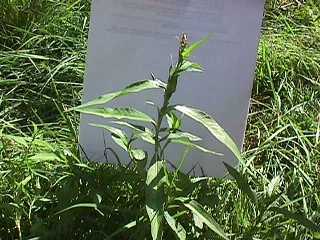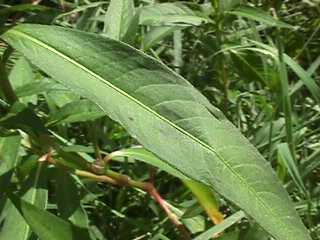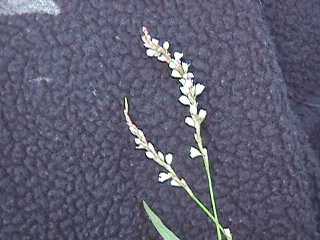


General Species Description
- A smooth to sparsely hairy annual herb. It is erect, and leafy-stemmed. Look for them just above ankle height.
Leaves
- Leaf stalks are short and thick, with alternate leaves, lance-shaped, with smooth margins and sheathing stipules. The most important identifying characteristic of this herb is a dark purple blotch in the center of the leaf, sometimes blended in well.
Inflorescence/Flowers
- Flowers are pink with a little bit of green, and they are very small, 2-3.5mm long. Blooms from March through September.
Fruits
- Fruits are shiny and black, round to oval shaped, 2-2.5mm long.
Habitat
- Can be found in moist to wet disturbed areas, especially in cultivated wetlands with standing water.
Range
- Ladysthumb is common throughout North America, yet occurs most commonly west of the Cascades.
Similar Species
- As long as you have found the dark purple blotch on the leaf, and can identify the flower, you have your ladysthumb.
Ecological Value
- Foliage is edible and is used by wildlife.
Human Value
- Ladysthumb can form thick mats in aquatic or semi aquatic habitats, so it is helpful for erosion control.
References
- Cooke, Sarah. Field Guide to Common Wetland Plants of Western Washington, and Northwestern Oregon. Seattle Audubon Society, 1997.
This page was created by: Christina Norton, August 2000
Return to Northwest Oregon Wetland Plants Project